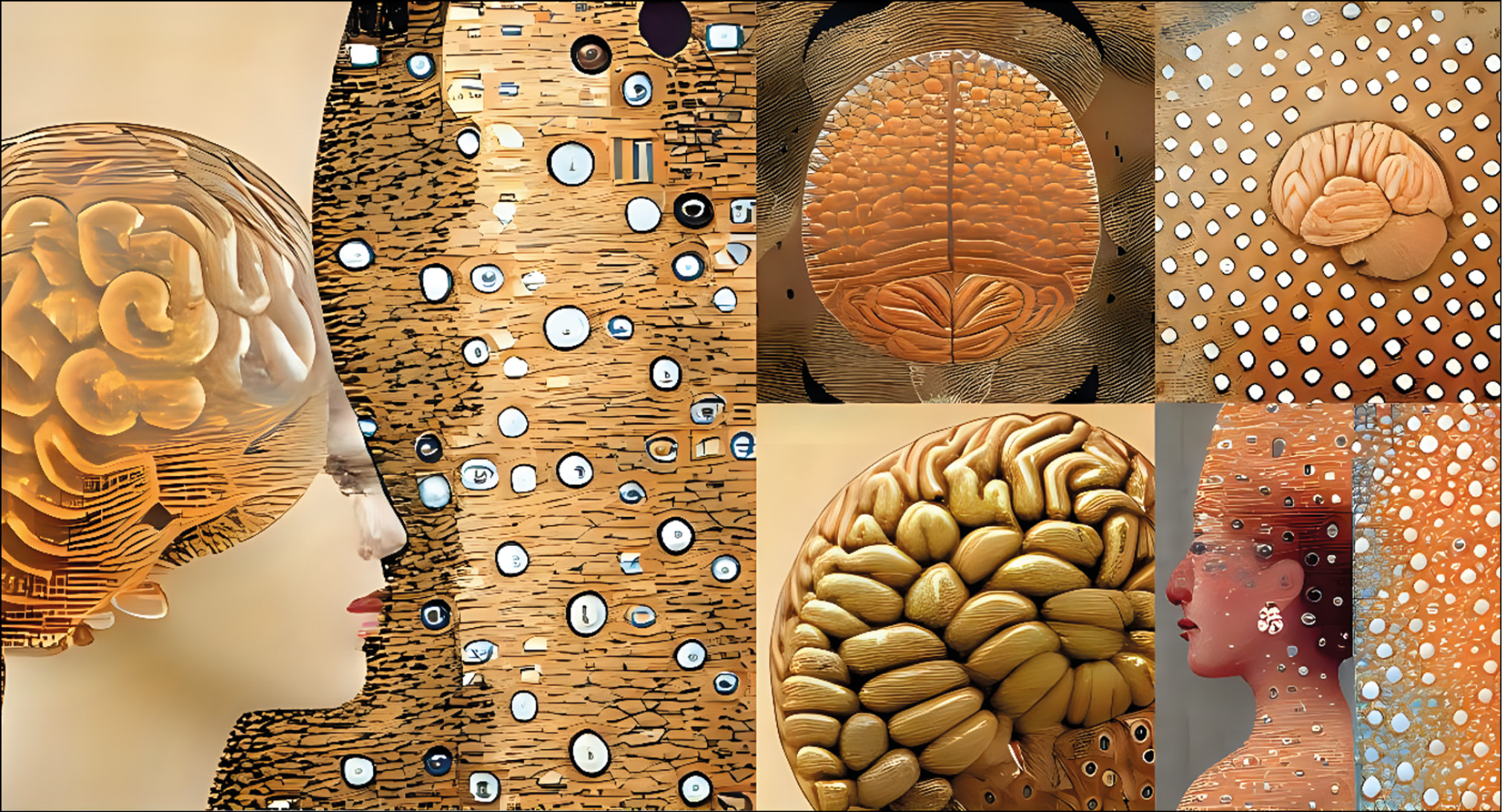Coexistence of machine intelligence, cyber art, and diagnostics: is it possible?
- Autores: Vlasov A.V.1,2
-
Afiliações:
- Research and Practical Clinical Center for Diagnostics and Telemedicine Technologies
- Izmerov Research Institute of Occupational Health
- Edição: Volume 3, Nº 3 (2022)
- Páginas: 324-330
- Seção: Correspondence
- URL: https://journals.rcsi.science/DD/article/view/108982
- DOI: https://doi.org/10.17816/DD108982
- ID: 108982
Citar
Resumo
The development of machine intelligence and the application of generative images created using it is a promising area of communication design and human–machine interaction. This letter to the editor represents the author’s vision of the use of generative images for diagnosing human conditions.
The use of machine intelligence as an interactive and intelligent diagnostic tool will allow a psychologist and a physician to effectively complement the therapeutic processes of controlled interactions of their users.
Libraries of models and sets of applications with text-to-image algorithms are already available that can be used by engineers and designers in the process of creating objects of modern digital art. They can also be applied in the investigation of new paradigms using visual communications and their application in experimental diagnostics.
Palavras-chave
Texto integral
##article.viewOnOriginalSite##Sobre autores
Andrey Vlasov
Research and Practical Clinical Center for Diagnostics and Telemedicine Technologies; Izmerov Research Institute of Occupational Health
Autor responsável pela correspondência
Email: a.vlasov@npcmr.ru
ORCID ID: 0000-0001-9227-1892
Código SPIN: 3378-8650
Rússia, Moscow; Moscow
Bibliografia
- Tanveer M, Richhariya B, Khan RU, et al. Machine learning techniques for the diagnosis of alzheimer’s disease: a review. ACM Transactions Multimedia Computing Communications Applications. 2020;16(1):35. doi: 10.1145/3344998
- Sharma S, Mandal PK. A comprehensive report on machine learning-based early detection of alzheimer’s disease using multi-modal neuroimaging data. ACM Computing Surveys. 2023;55(2):1–44. doi: 10.1145/3492865
- Koich MF, Pessotto F. Projective aspects on cognitive performance: distortions in emotional perception correlate with personality. Psicologia Reflexão Crítica. 2016;29(17):1–8. doi: 10.1186/s41155-016-0036-6
- Adaskina AA. Therapeutic possibilities of digital artistic creativity. Modern Foreign Psychology. 2021;10(4):107–116. (In Russ). doi: 10.17759/jmfp.2021100410
- Paladines-Jaramillo F, Egas-Reyes V, Ordonez-Camacho D, et al. Using virtual reality to detect, assess, and treat frustration. In: Morales R.G., Fonseca C., Salgado E.R., et al. (eds.) Information and communication technologies. TICEC 2020. Vol. 1307. Communications in Computer and Information Science. Springer, Cham, 2020. doi: 10.1007/978-3-030-62833-8_28
- Cetinic E, She J. Understanding and creating art with ai: review and outlook. ACM Trans Multimedia Comput Commun Applications. 2022;18(2):1–22. doi: 10.1145/3475799
- AlAmir M, AlGhamdi M. The Role of generative adversarial network in medical image analysis: an in-depth survey. ACM Computing Surveys. 2022. doi: 10.1145/3527849
- Ali H, Biswas R, Ali F, et al. The role of generative adversarial networks in brain MRI: a scoping review. Insights Into Imaging. 2022;13(8):1–15. doi: 10.1186/s13244-022-01237-0
- Lankinen K, Saari J, R Hari, et al. 2014. Intersubject consistency of cortical MEG signals during movie viewing. NeuroImage. 2014;92:217–224. doi: 10.1016/j.neuroimage.2014.02.004
- Nummenmaa L, Glerean E, Viinikainen M, et al. Emotions promote social interaction by synchronizing brain activity across individuals. Proceedings Nat Academy Sci. 2012;109(24):9599–9604. doi: 10.1073/pnas.120609510
- Tseng PH, Rajangam S, Lehew G, et al. Interbrain cortical synchronization encodes multiple aspects of social interactions in monkey pairs. Sci Rep. 2018;8(1):4699. doi: 10.1038/s41598-018-22679-x
- Shanechi MM. Brain-machine interfaces from motor to mood. Nat Neurosci. 2019;22(10):1554–1564. doi: 10.1038/s41593-019-0488-y
- Vlasov A. GALA Inspired by Neo Klimt: 2D images processing with implementation for interaction and perception studies (preprint). 2022. doi: 10.13140/RG.2.2.10806.57928
- Achlioptas P, Ovsjanikov M, Haydarov K, et al. ArtEmis: affective language for visual art. In: Proceedings of the IEEE/CVF Conference on Computer Vision and Pattern Recognition (CVPR), October 6, 2021:11569–11579. doi: 10.48550/arXiv.2101.07396
- Gala Klimt. Digital art collection of pictorial poems. Ridero. 2022. Available from: https://www.researchgate.net/project/GALA-KLIMT. Accessed: 15.08.2022.
- Vessel EA, Starr GG, Rubin N. The brain on art: intense aesthetic experience activates the default mode network. Front Hum Neurosci. 2012;6:66. doi: 10.3389/fnhum.2012.00066
Arquivos suplementares









